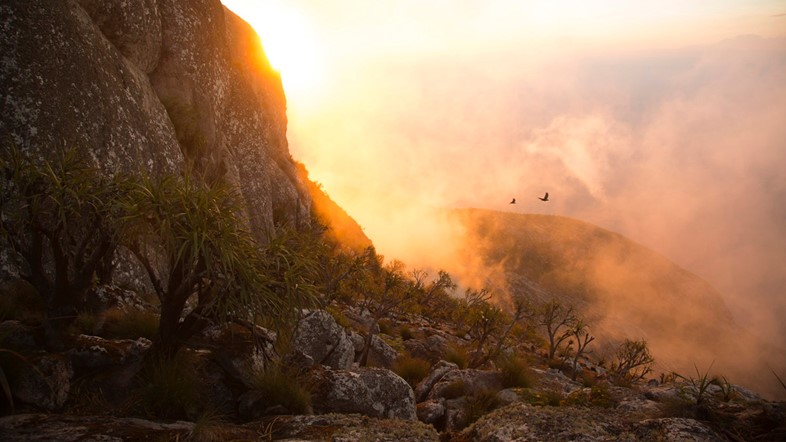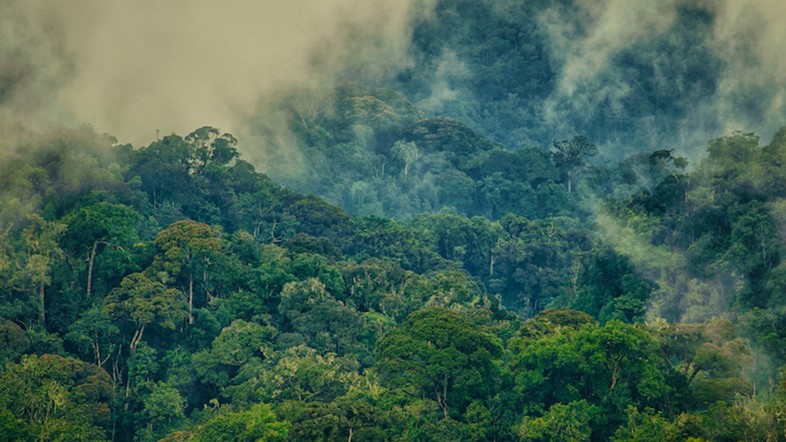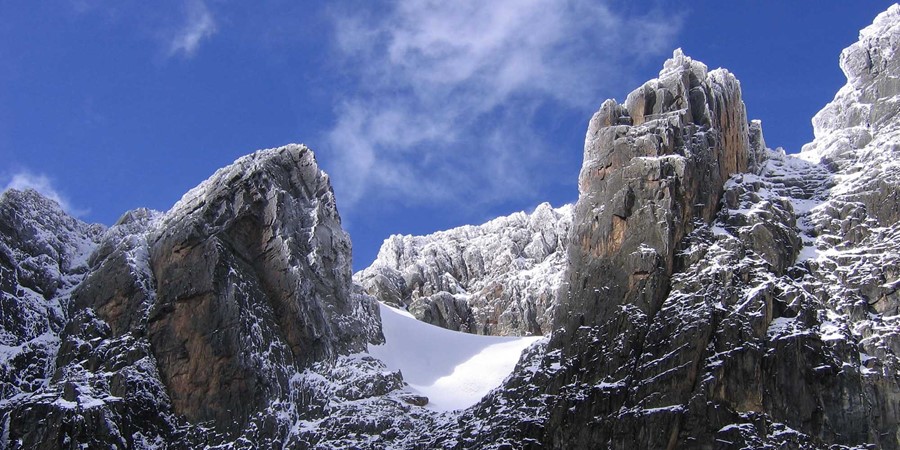super/collider takes us on a tour of the Afromontane zones – blossoming archipelago that drift high above the African plains
Where on Earth?
High above the dense rainforests and vast grasslands of Africa, a chain of remote islands float in the hazy, endless sky. Strung across the continent, these distant outcrops form their own unique and interconnected ecosystem; a separate and distinct wild Africa from the one we imagine from nature shows. These ‘Afromontane sky islands’ are elevated habitats found high up on the continent’s surprisingly diverse mountain ranges, which extend from rugged, rocky peaks to glacier-clad stratovolcanoes. Alone above the rest of Africa, they offer a series of life rafts for flora and fauna which can’t survive lower down.

The seven Afromontane zones are found in three distinct parts of the continent. The first forms a line running from the Arabian Peninsula south across east Africa, tracing the Great Rift Valley. This region is home to intense volcanic activity and glacier-topped mountains like the Rwenzori range, Mount Kenya and Africa’s most famous peak, Kilimanjaro. Further south, the Drakensberg range is high enough to host Afromontane species, while the West African and Cameroon highlands form the necessary conditions for this type of habitat on the Western side of Africa. Their often-poetic names read like something remembered from childhood story books – from the Eastern Arc forests of Tanzania and Kenya to the Southern Afrotemperate Forest on South Africa’s Western Cape.

What on Earth?
The climate of the Afromontane sky islands is usually cooler and more humid than the lands below – providing a habitat and refuge for a range of plants and animals. As the climate warms, some of these species may move higher on the hills to adapt. Some of the plants that thrive in such conditions look familiar from other mountain ranges around the world, while others are totally unique. These include the flowering Hagenia abyssinica found only in the high-elevation Afromontane regions of central and eastern Africa, and the Assegai or Lancewood tree of southern Africa. The strong, straight shoots of this species are traditionally used by the Bantu and Zulu to make long throwing spears.
Further north, the relatively undisturbed forests of Mozambique are likely home to hundreds of undiscovered species. As the ‘Sky Islands’ scientific expedition explained on their crowdfunding page: “Sky islands are terrestrial analogues of islands in oceans. [In Mozambique] they are made of Precambrian rocks that are 3 billion years old and constitute the bedrock of our planet. They are among the oldest mountains of Africa, places where biological evolution has continued for millions of years without interruption. The forests lying on these mountains are both cradles and museums of life, where in the deep time organisms have originated and persisted for million of years, with little disturbance.”

How on Earth?
Although less popular than traditional African safari excursions, trekking in the continent’s Afromontane regions is a good way to encourage ecotourism and contribute to highland economies. There are tons of options available, from climbing Kilimanjaro to hiking through more remote, forested areas. Search "Afromontane" + "trekking" to get started.
